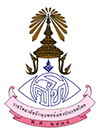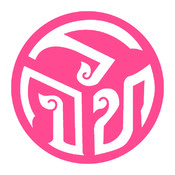Laser Treatment In Glaucoma
Updated 2016-09-20 19:17:00
Laser Iridotomy
• relieve pupillary block
• effective, relatively non-invasive, preferable to surgical iridectomy
Indications for Laser Iridotomy
• PAC & PACG: if pupillary block significant
• PACS
• Absolute: PAC/PACG in the fellow eye
• Relative: confirmed family history of PAC/PACG, need for repeated dilated examinations, poor access to regular ophthalmic care, medication required that may provoke pupillary block
• Secondary angle closure with pupil block e.g. lens induced
• Not helpful if pupil block not dominant e.g. uveitis, iris cyst and uveal effusion)
Type of laser: Nd:YAG laser, Argon laser, Argon followed by Nd:YAG laser (in thick iris)
Complications: corneal endothelial and/or epithelial burns, endothelial decompensation, IOP spikes, post-laser inflammation, posterior synechia, bleeding, closure of iridotomy hole, cataract formation or progression, glare and monocular diplopia, retinal burn
Laser Iridoplasty
- Laser burns to contract the peripheral iris in order to widen the anterior chamber angle and access of aqueous humor to angle.
Indications for Laser Iridoplasty
- Acute
• Medically unresponsive AAC
• Patent PI with high IOP or recurrence acute attack
• Lens induced secondary AAC
• Contraindication to usual medication
- Chronic
• Plateau iris
• Appositional closure despite patent PI
• CACG with suboptimal IOP control
Technique: Argon laser 0.2-0.5 sec, 200-500 mW, 500 µm, 30-40 spots/360 degrees
Limitations
• Developed PAS and IOP rise
• Trabecular damage
• Not helpful in PAS
Complications
• IOP spike
• Focal corneal endothelial damage
• Pupil distortion
• Iritis, pigment dispersion
• PAS
• Loss of effect over time
Selective Laser Trabeculoplasty (SLT)
Widely use, relatively effective, non-invasive, avoid medical non adherence, easy to perform
Good Candidates for SLT:
Suitable for POAG, OHT, NTG, pseudoexfoliation glaucoma, pigmentary glaucoma patients who medical therapy failure or inappropriate, adjunct to medical therapy, primary treatment if appropriate, poor compliance
Mechanism: to enhance TM outflow by frequency-doubled Nd:YAG laser (532 green) aim to cover area of pigment and non pigment TM
Laser Parameters: Spot size 400 micrometer, exposure 3 nanosecond, power 0.4-1.4 mJ, 30-50 spots over 180 degrees
Efficacy:
• Replace 1 topical medication, decrease IOP 20-30% at 6 months and decrease effect over time to 23% at 6 years (mean survival time 2 years)
• SLT 180 degrees effectively equal to 360 degrees
• Procedure can repeat but less efficacy compared to first laser treatment
- 100% of 360 degree SLT and 84% of 180 degree SLT maintain IOP fluctuation of less than 3 mmHg at 2 years
Predictive factors: higher baseline IOP related with higher success rate
Endoscopic Cyclophotocoagulation (ECP)
Microglaucoma surgery
Instrument:
• probe is key point – have both light source (175 W xenon for illumination) and aiming beam (helium-neon laser)
• 810 nm diode laser
Approach: anterior (clear cornea) or posterior (pars plana)
Anaesthesia: subtenon or retrobulbar block
Patient Selection:
• Stand alone: aphakic or pseudophakic
• Combined with cataract Sx
• Combined with other surgeries
Special cautions:
• Localized zonule weakness or dialysis
• Advanced PXG: limited laser uptake
• Uveitis or NVG : not contraindicate but beware of severe inflammation or post-op hypotony
• Phakic: beware of capsular damage
Complications: minimal
1. Inflammation
2. IOP spike
3. Cataract progression: easily
Cyclophotocoagulation with MicroPulse Technology
new alternate laser to the standard diode transcleral cyclophotocoagulation (G probe).
Concept: continuous wave mode to minimize thermal elevation reduce energy, different pathway of decrease IOP
Instrument: Irides Cyclo G6 MP laser (810 nm)
FDA approved in USA in early 2016
Pros
• Griddle, gentle slightly move on conjunctiva
• Not necessary to use eyelid speculum
• Minimise collateral thermal damage
• No evidence of structure change
• Effect on the 1st day to 1 week (less inflammation)
• 40% IOP reduction
• Reduction of inflammation and phthisis (complications in Diode probe)
Laser treatment in angle closure glaucoma: laser iridotomy? or laser iridoplasty?
• Diagnosis and pathology are the keys of choosing laser strategy.
• Appropriate laser treatment should be done before irreversible change of both TM and optic nerve head.
• Laser iridotomy: definitive treatment of PAC with pupillary block, but remaining progressive narrowing of angle.
• Laser iridoplasty:
• Alternative approach for acute PAC (effective result)
• Eliminate residual appositional closure (plateau iris)
• As routine treatment: unproven
พญ.จิภาดา พฤกษาชลวิทย์
อ.พญ.กุลวรรณ โรจนเนืองนิตย์
 RCOPT
RCOPT